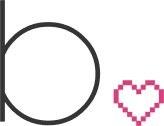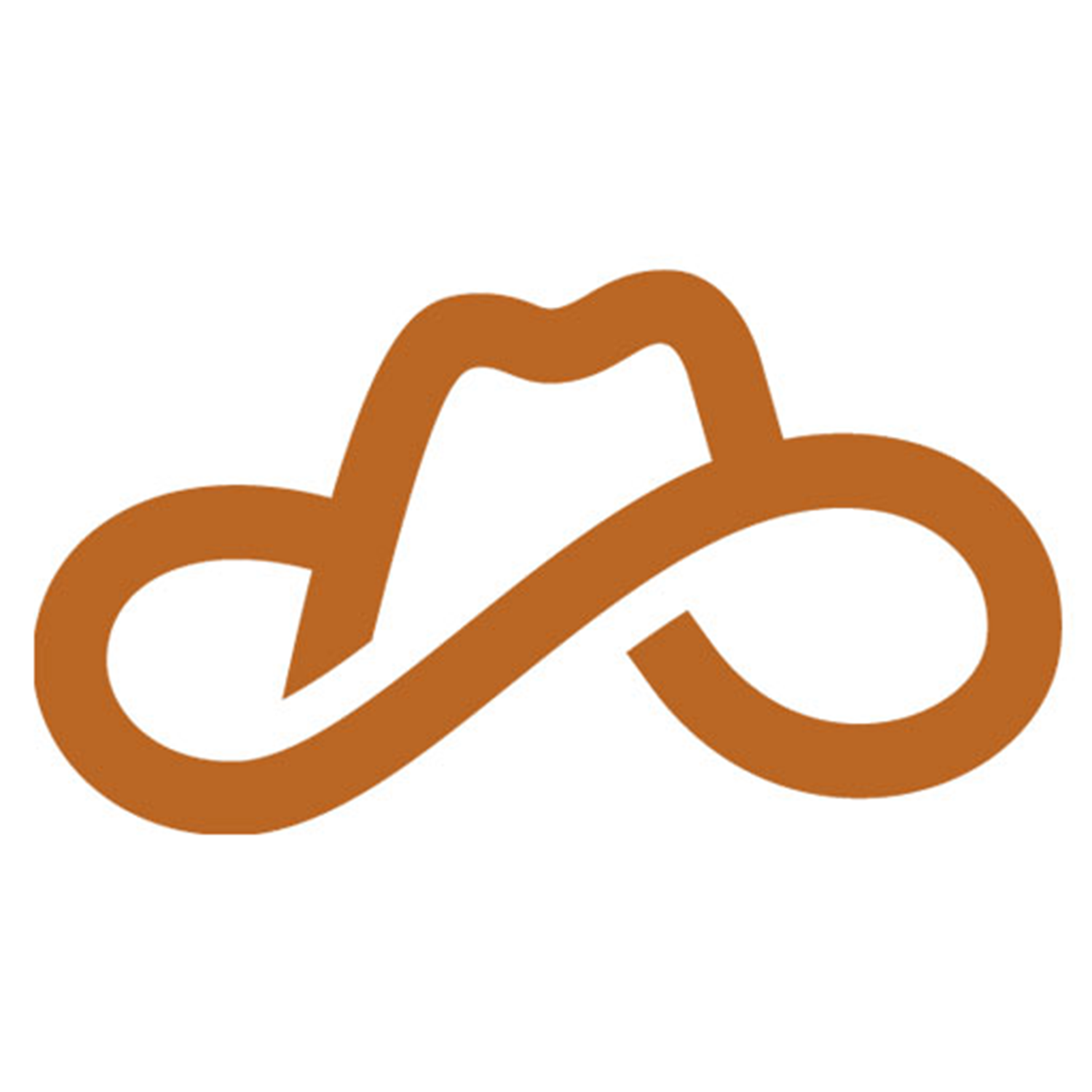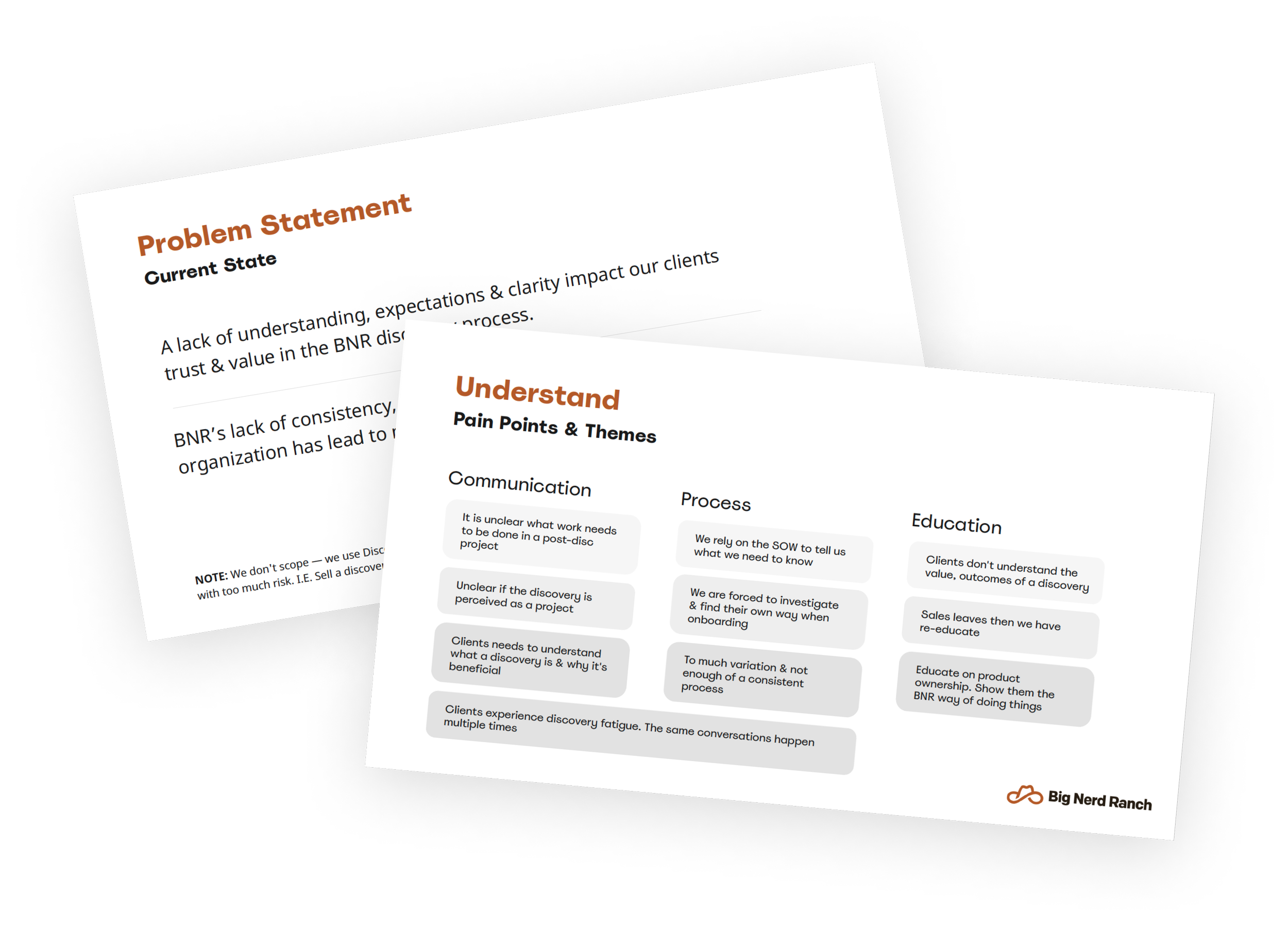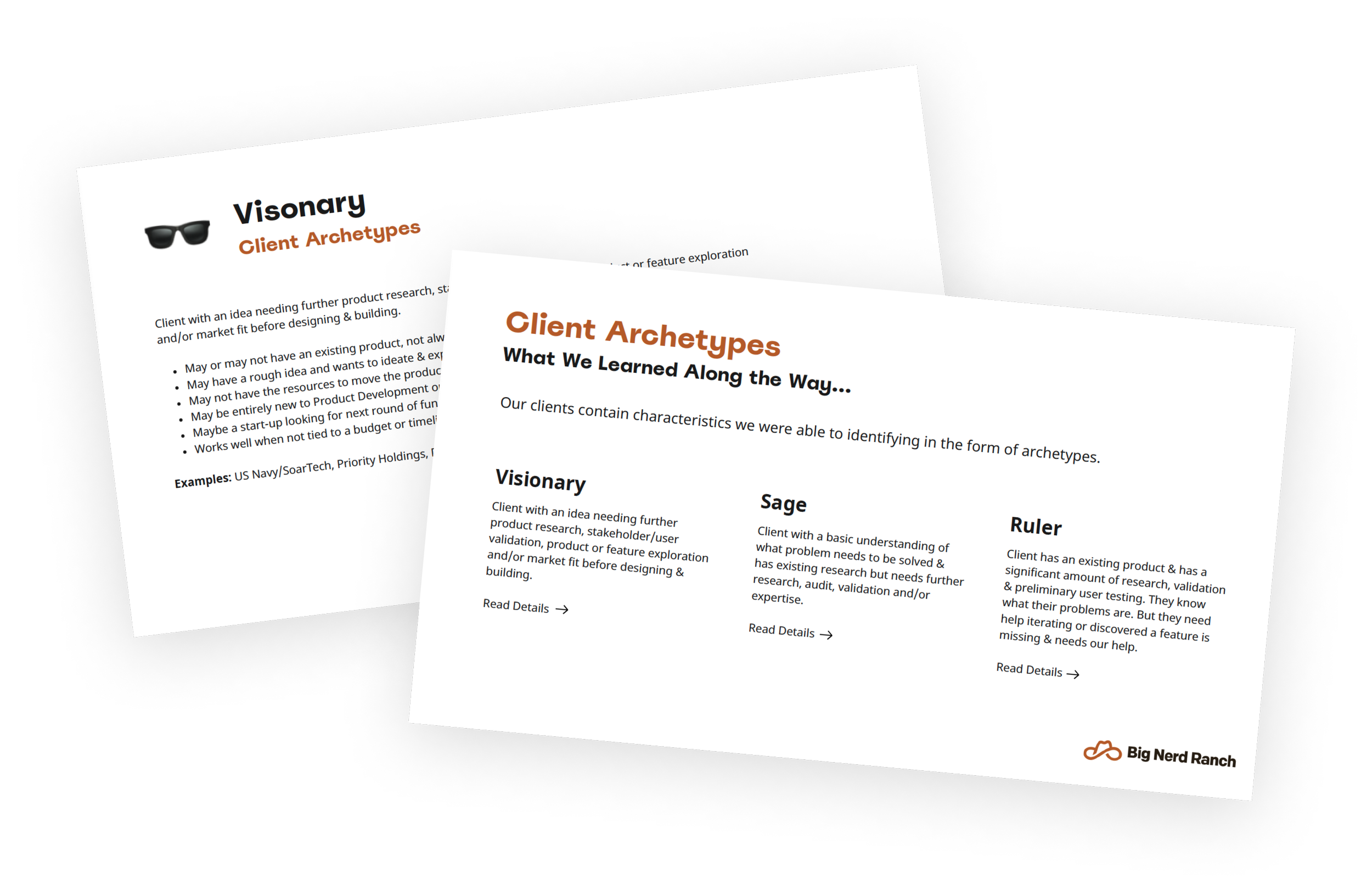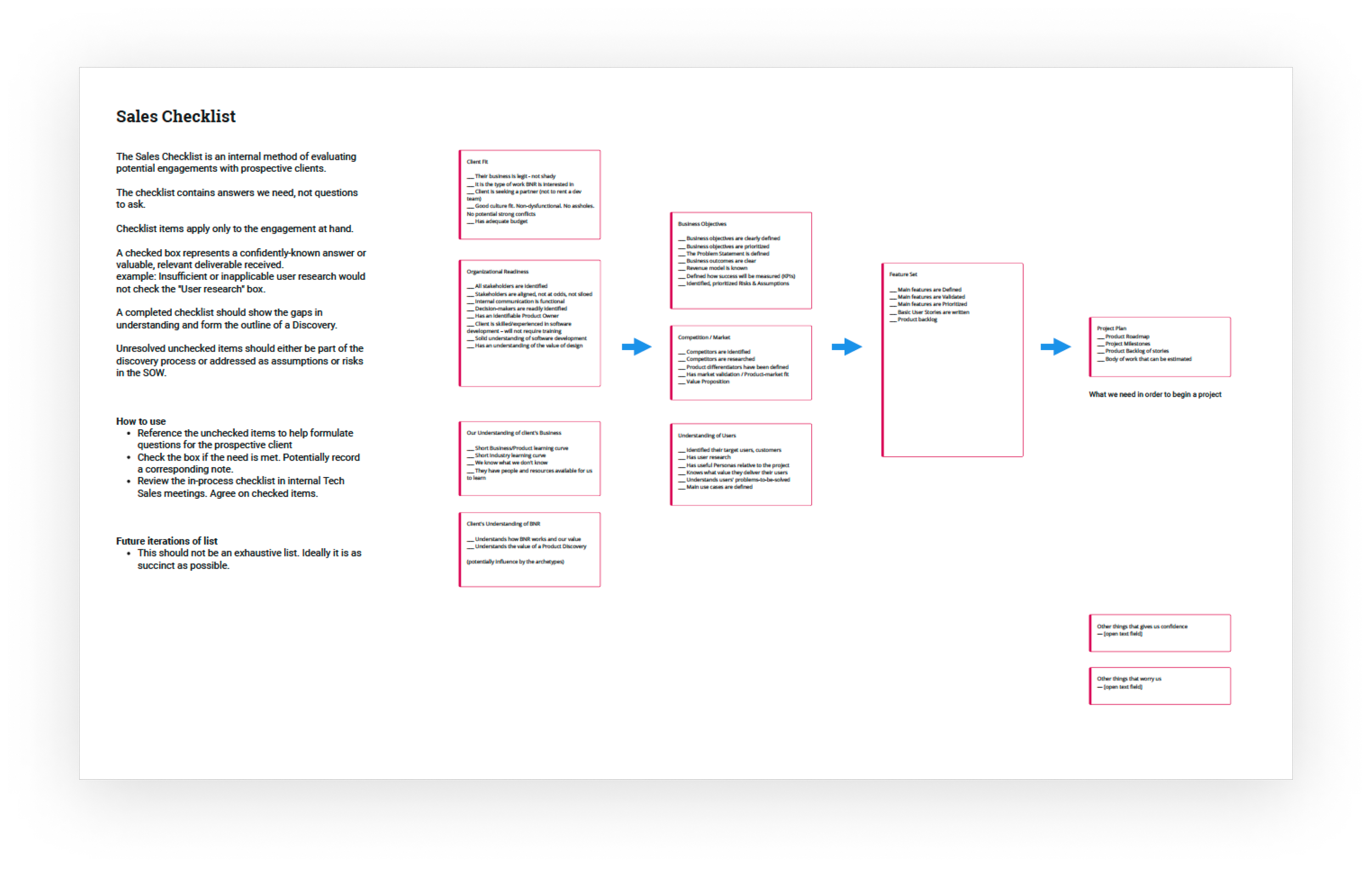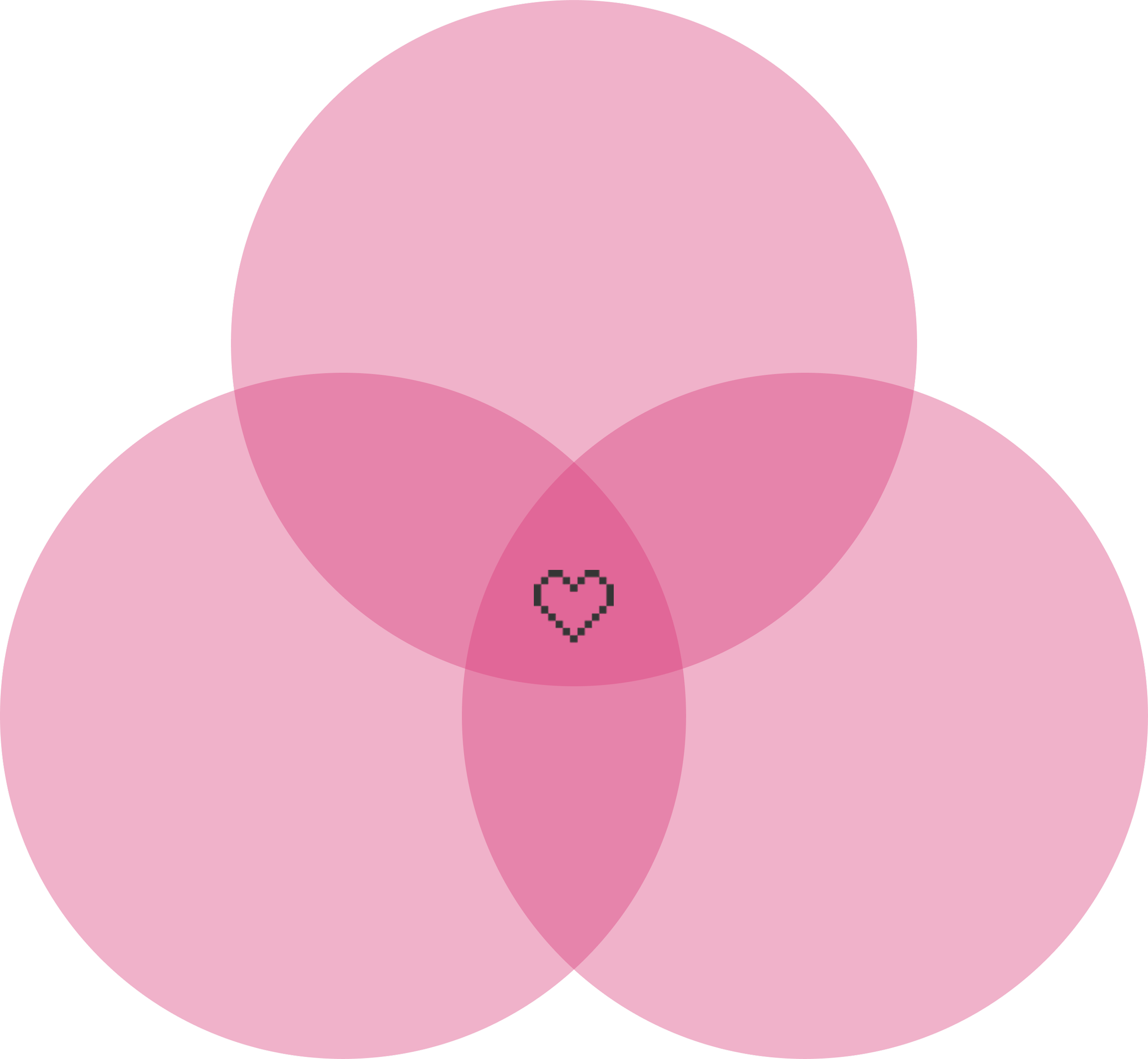Product Consultancy I Sales Enablement I DesignOps
Improving Discovery to Increase Sales
Enhancing the discovery process to strengthen client trust, streamline sales, and ensure project success
BACKGROUND: Big Nerd Ranch is a Product Consulting company that was struggling with selling and conducting client discoveries. They had a lack of understanding, expectations and clarity impact our clients trust and value in the BNR discovery process. BNR’s lack of consistency, documentation, communication and organization has lead to misalignment.
2022
DURATION: 3 Months
PLATFORM: Internal Process Improvements
ROLE: Lead Experience Designer, Big Nerd Ranch
SKILLS & METHODOLOGIES:
Process Analysis, Stakeholder & User Interviews, Workshops and Surveys, Discovery Templates and Discussion Guides, Sales Checklist and Handoff Guidelines, Standardized Discovery Playbook and Rollout Strategy, Sales Checklist, Rollout Strategy
TOOLS & FRAMEWORKS:
Miro, Figma, Keynote
PROBLEM:
Recent projects were scoped and sold inaccurately, leading to:
Loss of revenue and extended timelines
Unhappy clients due to unmet expectations
Inconsistent discovery processes with no clear ownership
This issue had persisted with little investigation into its root causes.
SOLUTION:
A design-led internal discovery to:
Identify process gaps
Align cross-functional teams
Create a standardized and scalable discovery framework
By defining clear expectations and improving communication, we ensured better sales alignment and client trust.
OUTCOME:
A clear, structured discovery process for both clients and internal teams
Stronger sales enablement through improved materials and education
Increased client trust, leading to better sales and more successful execution
Full case study ~5 min read
Setting the Stage
Big Nerd Ranch (BNR) had a reputation for expert product consulting, but behind the scenes, its discovery process was falling short. Projects were being sold without a shared understanding of scope, timelines ballooned, and client trust eroded due to inconsistent communication and delivery. With no standardized approach and little cross-team alignment, discovery had become a bottleneck rather than a bridge. Recognizing the critical impact on sales and project success, BNR embarked on a design-led initiative to diagnose the problem, align stakeholders, and build a scalable discovery framework that could restore confidence — internally and externally.
Problem
Recent projects were scoped and sold inaccurately, leading to:
Loss of revenue and extended timelines
Unhappy clients due to unmet expectations
Inconsistent discovery processes with no clear ownership
This issue had persisted with little investigation into its root causes.
Solution
A design-led internal discovery to:
Identify process gaps
Align cross-functional teams
Create a standardized and scalable discovery framework
By defining clear expectations and improving communication, we ensured better sales alignment and client trust.
DISCOVERY:
What We Did
Conducted stakeholder interviews (13 team members across 3 teams)
Mapped the current workflow to diagnose inefficiencies.
Analyzed past discoveries to identify pain points
Reviewed and leveraged existing documentation
LEARNINGS:
Key Findings
Negative Client Perception
Clients didn’t see the value of discovery
Unclear outcomes and inconsistent explanations led to distrust
Lack of Process Alignment
No agreed-upon discovery framework within the company
Teams operated with varying approaches, leading to confusion
Communication Gaps
Sales teams lacked the tools to clearly explain discovery value
Repetitive conversations across sales, discovery, and delivery fatigued clients
She has expert skills and very experienced in all things UX and UI. I'm particularly impressed in her workshop skills. She has a long list of methodologies in her toolbox, and is adept at choosing the right one for the job. Her facilitation skills are fantastic and yielded solid design deliverables to build upon for the Discovery project.
Matt Raufman
Principal Experience Designer, Big Nerd Ranch
NARROWING SCOPE:
Areas of Focus
Communication:
Clearly define discovery deliverables and expectations
Address client skepticism through better sales materials
Reduce redundant conversations
Process Standardization:
Move beyond reliance on Statements of Work (SOWs)
Establish a repeatable and scalable discovery model
Provide teams with a structured onboarding process
Client Education:
Demonstrate discovery’s role in product success
Train clients on BNR’s approach to product development
Ensure smooth transitions from sales to project teams
ARCHETYPES:
Discovery Types & Their Fit
Product Ideation:
Client with an idea needing further product
research, stakeholder validation, product or feature exploration and market fit before designing and building
Product Validation:
Client with a basic understanding of what needs to be done based on light research but needs further research, audit, validation and expertise
Product Discoveries:
Client has an existing product and has done a significant amount of research, validating needs and preliminary user testing but they need help getting to the next level
DELIVERABLES:
Getting Real
Discovery Playbook: A standardized framework for conducting discoveries
Sales and Client-Facing Materials: Guides, checklists, and templates to set expectations
Executive Summary/Discovery Diary: Internal documentation to ensure continuity
Handoff Guidelines: Clear transition process from sales → discovery → delivery
GOALS:
Defining Success
Education
Communication
Standardization
Well defined Discovery documentation
Alignment on strategy and execution of the Discovery process
Clear communication of the Discovery process
A successful execution of the Discovery process with a plan to iterate as needed
Improvements to our tech sales process
Confidence that our clients value, trust and want to invest in our recommended solution
Indirect improvements to the BNRs project process
Recommended solutions that users desire and are viable to clients
A more clearly defined and communicated discovery process will affect client and internal team alignment — resulting in more successful outcomes
An easy understandable discovery process leading to better sales materials and client value — ultimately leading to more sales
By defining a repeatable, scalable discovery approach, BNR improved project alignment, enhanced client relationships, and ultimately drove more sales.
RESULTS:
